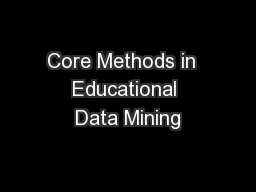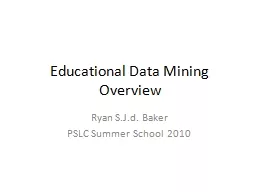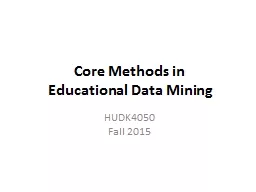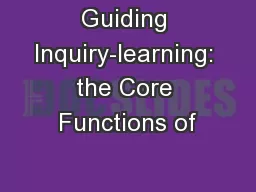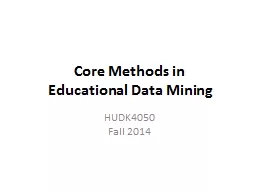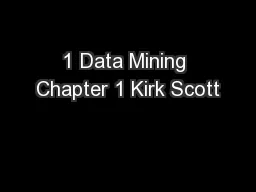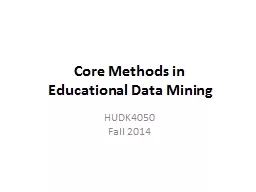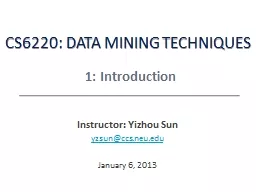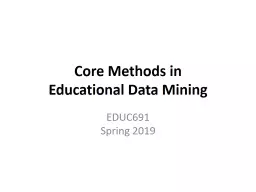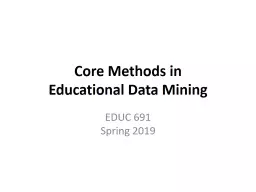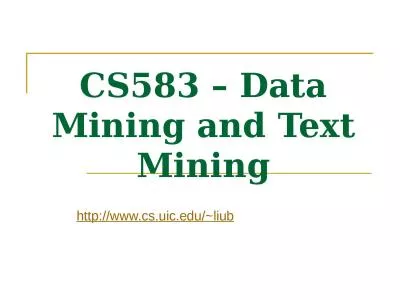PPT-Core Methods in Educational Data Mining
Author : calandra-battersby | Published Date : 2018-10-09
EDUC545 Spring 2017 Data Used to Be Dispersed Hard to Collect SmallScale Collecting sizable amounts of data required heroic efforts Like we heard about from Alex
Presentation Embed Code
Download Presentation
Download Presentation The PPT/PDF document "Core Methods in Educational Data Mining" is the property of its rightful owner. Permission is granted to download and print the materials on this website for personal, non-commercial use only, and to display it on your personal computer provided you do not modify the materials and that you retain all copyright notices contained in the materials. By downloading content from our website, you accept the terms of this agreement.
Core Methods in Educational Data Mining: Transcript
Download Rules Of Document
"Core Methods in Educational Data Mining"The content belongs to its owner. You may download and print it for personal use, without modification, and keep all copyright notices. By downloading, you agree to these terms.
Related Documents

